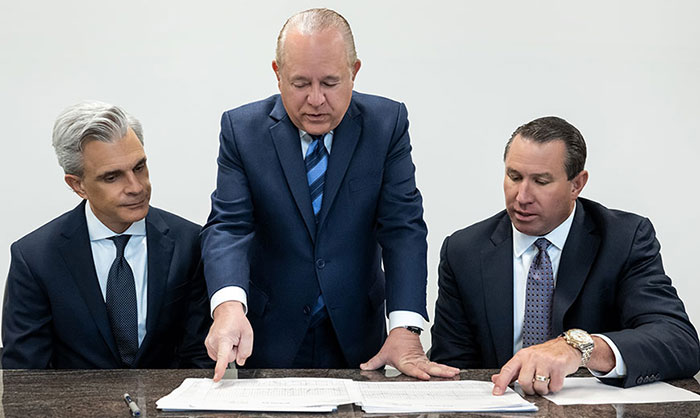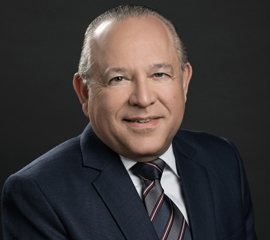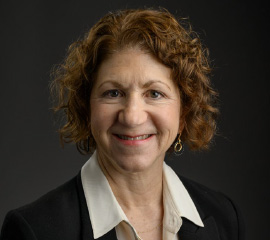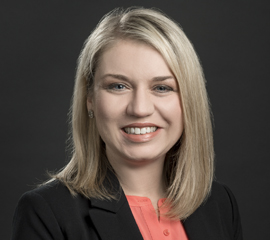What is Hypoxia & Anoxia?
A predominant cause of brain damage around the time of birth is inadequate oxygen supply to the fetus or newborn baby. Several clinical terms are used to describe this condition. Deficiency of oxygen in infants is known as “hypoxia”, while complete lack of oxygen is called “anoxia”. The physiological outcomes of anoxia or hypoxia are termed as “birth asphyxia”. These are the most devastating of birth injuries.
Cerebral anoxia is sometimes used to describe a condition when the oxygen supply to the brain is completely cut off. This condition usually causes permanent brain damage. Many babies that suffer hypoxia or anoxia in the perinatal phase (shortly before and after birth) develop HIE or hypoxic ischemic encephalopathy, which occurs when blood flow to the brain is reduced or the oxygen content in the blood is extremely low.
A common consequence of hypoxia and anoxia during labor and delivery or shortly after birth is cerebral palsy. The leading cause of cerebral palsy has been recognized as a hypoxic or anoxic birth injury.

How does Hypoxia or Anoxia Occur During Labor and Delivery?
Hypoxia or anoxia may occur due to ischemia (obstruction) or rupture of blood vessels of the fetus or the mother. This can be caused by umbilical cord complications. It may also result from abnormal functioning of the heart valve or abnormal pulmonary functioning (such as, hyaline membrane illness of the baby or pulmonary illness of the mother).
The major cause of brain damage during the perinatal period is birth asphyxia – clinically known as critically impaired gas exchange in the intrapartum phase (time from the labor onset to placenta delivery). A primary cause of this is fetal distress that can be caused by a number of factors including prolonged labor, tachysystole, placental abruption, uterine rupture, or head compression of the baby during labor.
If doctors and nurses are acting appropriately they will have the baby’s potential for fetal distress carefully watched by using an electronic fetal monitoring device. The fetal monitoring strips will show the baby’s heart rate reactions if they are suffering from either hypoxia or anoxia.
According to researchers, anoxic injury is responsible for the death of as many as six out of 10 premature and full term babies and for a similar number of neonatal (newborn) deaths. Anoxia could occur at any stage in-utero, or it may develop during the birth process or after birth. This is why it’s so fundamental for doctors and nurses to regularly monitor the baby even after he or she is born.

Pregnancy Complications and Other Risk Factors for Hypoxia/Anoxia
Pregnancy complications and other risk factors that could result in oxygen deficiency at birth include:
- Fetal distress
- Injury during forceps delivery
- Injury during vacuum extraction
- CPD or cephalopelvic disproportion (mismatch between the fetal head size and maternal pelvis) causing prolonged or cessation of labor or even head compression
- Abnormal presentation of the fetus
- Uterine rupture
- Placental abruption
- Meconium Aspiration
- Errors during resuscitation shortly after birth
- Prolonged labor
- Low amniotic fluid levels (oligohydramnios)
- Malformation of the infant’s airway or airway blockage
- Infant anemia (inability of the blood cells to transport sufficient oxygen)
- Compression of the umbilical cord near the infant
- Umbilical cord prolapse (displacement from its normal position)
- Newborn babies with low blood sugar “hypoglycemia”
In case of a high risk pregnancy, the medical team must carefully monitor the woman’s condition throughout the pregnancy with regular sonograms and ultrasounds. Some of the maternal factors that are also known to contribute to hypoxia or anoxia at birth include:
- Preeclampsia (serious pregnancy complication marked by high blood pressure)
- Maternal diabetes
- Maternal obesity
- Advanced maternal age
- Maternal infections
- Mother’s low levels of oxygen
- Mother’s low blood pressure
Symptoms of Hypoxia and Anoxia
One of the first indicators of hypoxia or anoxia during labor is a change in the heartrate. This is notable from an irregular or erratic heart rate. Fetal heart rate monitoring is vital at the time of labor as well as after labor to make sure that the baby is getting adequate oxygen. If the heart rate strips show a low heart rate (bradycardia), decelerations that cannot be corrected especially immediately after a contraction (late decelerations) or a decrease in variability of the heart rate then medial intervention is necessary this can ultimately include an emergency C-section if the conditions do not improve.
Additional symptoms of hypoxia or anoxia in the newborn may include:
- Pale or bluish skin color
- Low APGAR scores
- Breathing difficulties that may require neonatal resuscitation
- Infant fatigue or lethargy (low fetal movement)
- Weak or poor muscle tone
- Yellowish color (Jaundice)
- Absence of crying or weak crying
- Absence of urination
- Poor reflexes
- Baby’s low blood pressure
- Abnormalities related to blood clotting
- Stool (meconium) in the amniotic fluid including meconium aspiration syndrome
- Fetal Acidosis (excess acid in the blood)
- Neonatal seizures
Neonatal seizures may occur when the brain fails to receive oxygen for a certain time period. In this condition, the brain will go into an emergency mode until it begins to malfunction. This is when seizures may develop. In some cases, the hypoxic or anoxic brain injury to the baby may not be detected for months or even years after it occurred.
The earliest signs of brain damage in these cases could be cognitive impairments or missed developmental milestones. Parents should be mindful of the following signs, among others, in these cases:
- Developmental delays
- Movement disorders
- Balance problems
- Speech difficulties
- Visual impairment
- Hearing impairment
- Poor memory because of electrical signal overload
- Epilepsy
- Cerebral palsy
Fetal Heart Monitoring to Detect Hypoxia or Anoxia

Medical providers can perform external or internal fetal heart monitoring to keep track of the infant’s heart rate in utero (in the womb).
- External Fetal Heart Rate Monitoring: Doppler ultrasound equipment can be used to perform continuous external monitoring. A transducer (ultrasound probe) is attached to the mother’s abdomen. The transducer transmits sounds from the infant’s heart to a computing machine, which records and displays the heart rate and pattern on the screen.
- Internal Fetal Heart Rate Monitoring: In this case, an electrode (thin wire) is attached to the infant’s scalp. The electrode runs from the infant to the cervix of the mother, and from there to a computer monitor. This technique is considered more accurate than external monitoring. Moreover, it is possible only once the cervix is open after the breaking of the amniotic sac.
Fetal heart rate monitoring, whether external or internal, is an important tool for medical providers to gather critical insights into the baby’s oxygen supply. Careful monitoring will usually help them detect abnormal heart rates and a timely treatment plan can be implemented. If the medical team determines that the infant is at the risk of hypoxia or anoxia, they may go ahead with an emergency C-section.
Tests to Detect Hypoxic or Anoxic Brain Damage
Medical professionals can confirm a brain injury related to hypoxia or anoxia by performing an EEG (electroencephalogram), MRI (magnetic resonance imaging) and/or a Head CT (computerized tomography) scan. More detailed evaluations may be performed using SPECT tests. This is a specialized CT scan to examine specific areas of the brain for metabolism and blood flow. Evoked potential tests to measure electrical activity in specific areas of the brain, and other tests to assess the sensory, auditory, and visual pathways may also be performed.
On the MRI, different images can appear to show a birth brain injury occurred. These different types of images relate to different brain injury patterns as a result of hypoxia or anoxia. The different injury patterns are:

- Acute Profound Asphyxia: This occurs when oxygen is sudden and severe resulting in almost total cessation of the oxygen supply to the brain. MRI results will usually show damage to the deep grey matter of the brain including the basal ganglia, brain stem and thalamus. Cerebral Palsy is one of the common results of this injury pattern since the damage is done to the motor function part of the brain.

- Partial Prolonged Hypoxia: This injury pattern can be recognized on a MRI. It occurs when the hypoxia results in a preferential shunting of vital blood flow from one part of the brain to protect other parts of the brain as a result hypoxia. This occurs over time vs. suddenly—usually more than half an hour. The MRI will show a “watershed” effect usually of the outer portions of the brain including the cerebral cortex and the brain’s white matter. Some watershed can be severe though causing damage to the grey brain matter as well.
- Mixed Injury Pattern: This is a common MRI finding of baby’s suffering hypoxic ischemic encephalopathy. Often the films show that the baby’s brain suffered from combination of acute profound and partial prolonged injuries.
Hypoxia and Anoxia Prognosis
Children with birth asphyxia during labor, delivery, or as a newborn may suffer permanent or severe brain damage including HIE and cerebral palsy. The prognosis can vary according to the severity of brain damage, co-morbidities (other health conditions), and the child’s general health. The extent of damage usually depends on:
- The degree/level of oxygen deprivation
- The duration of oxygen deprivation
- How fast the right treatment was administered
Newborns that experience HIE (hypoxic ischemic encephalopathy) are more likely to suffer permanent or severe brain injury and may develop long-term conditions, such as cerebral palsy. Birth asphyxia may also affect other organs, apart from the brain, such as the heart, kidneys, lungs, and bowels. In extreme cases, total organ failure or the death of the baby may occur.
Children who experience permanent organ damage usually need extensive care, including lifelong therapy and medications, constant supervision, and special education. Correlating with this, when the medical providers are able to make a timely diagnosis and utilize appropriate treatment strategies, severe or permanent injury to the brain and other organs could be prevented and the child with birth asphyxia can recover and have a normal life.
What Causes Birth Asphyxia?
Prolonged Labor
A prolonged labor in the first pregnancy is said to occur when the first stage (cervix dilation) and the second stage (the delivery as the infant moves down through the vagina) together constitute more than 20 hours. In subsequent pregnancies, this time period is 14 hours. Prolonged labor and arrested labor (when the delivery process is completely halted) may occur due to insufficient contractions or mechanical hurdles like CPD or abnormal fetal presentation.
Cephalopelvic Disproportion (CPD)
Cephalopelvic disproportion may lead to prolonged or arrested labor. CPD occurs when the infant’s size of the head is disproportionately larger than the birth canal of the mother, which prevents the baby’s passage through the canal. CPD and abnormal fetal presentations may result in complications, such as compression or prolapse of the umbilical cord. These complications are some of the well-known causes of birth asphyxia.
Dangerous Drugs or Devices
In the face of these complications, sometimes the medical team may decide to hasten the delivery using vacuum extraction or forceps, which could increase the risk of birth injury or birth trauma that can cause birth asphyxia.
Administering certain labor inducing medications like Pitocin with significant side effects may also increase the risk of birth asphyxia. If Pitocin is misused or fetal distress causing hypoxia is not recognized and responded to then valuable minutes can be lost when an emergency C-section is required.
Insufficient Contractions
These are usually a consequence of low uterine activity, and may cause prolonged labor. Overuse of pain meds and/or anesthesia might cause this poor uterine activity. When uterine activity is low or weak, the proper cervix dilation may not occur, preventing the baby’s exit. Physicians may administer drugs to stimulate the uterus, but sometimes it could trigger hyper-stimulation causing excessive contractions.
Prolonged hyperstimulation or contractions (tachsystole) can cause a hypoxic birth injury to the infant because the placenta may fail to be recharged with oxygen-rich blood. Therefore, when high-risk drugs are used for uterine stimulation, careful and continuous fetal heart rate monitoring must be performed. The goal should be to deliver the baby in a timely manner at the earliest signs of prolonged fetal distress.
Treatments for Birth Asphyxia
At the time of birth, if the infant has mild asphyxia, the medical team should perform initial stabilization maneuvers, such as head positioning, tactile stimulation, and nose and mouth suctioning. Depending on the condition, these actions must be followed by measures for breathing support when it is clear that a more severe hypoxic or anoxic injury has occurred. These proper neonatal resuscitation methods include:
- Supplemental oxygen
- CPAP – continuous positive airway pressure
- NIPPV – noninvasive positive pressure ventilation
- Intubation Mechanical ventilation or bag & mask ventilation
In the case of newborns with more severe birth asphyxia who cannot be resuscitated with the above measures, the medical providers should order a full cardiac evaluation to rule out any congenital cardiopulmonary defects. At the same time, more advanced treatments or treatment combinations should be considered as follows:
High Frequency Oscillatory Ventilation (HFOV)
This ventilatory technique provides breathing support to the infant from a machine that uses pressure oscillations to deliver low-volume but rapid puffs of air into the baby’s lungs. The mechanism is gentler than a standard breathing machine to ensure that the delicate lungs of the newborn do not suffer any damage from high airway pressure.
Inhaled Nitric Oxide
If the newborn is diagnosed with pulmonary hypertension (high blood pressure in the lungs) or respiratory failure, inhaled nitric oxide may be used. The infant will receive the gas into their airway through a heart-lung pump or a breathing tube for life support. This will enable the dilation (opening up) of the blood vessels in the lungs so that the vessels can quickly supply oxygenated blood to all parts of the body.
Therapeutic Hypothermia
When Hypoxic Ischemic Encephalopathy (HIE) has occurred as a result of birth asphyxia, injury may take place in two stages. The first stage injury occurs as the hypoxia or anoxia is robbing the fetus of the necessary oxygen causing direct brain injury due to cell death. Injury in the second stage (known as “reperfusion injury”) occurs after the normal oxygen supply to the brain has been restored – and it may last for several days.

Hypothermia therapy can help protect the infants who have suffered HIE injury from further brain injury during this second stage following birth asphyxia. Medical providers should ideally start this treatment within six hours after birth to minimize brain damage. The therapy involves cooling the infant’s internal body temperature to about 91°F for a period of 72 hours. Therapeutic hypothermia should only be applied if the infant’s gestational age is at least 35 weeks (up to five weeks early).
Extracorporeal Life Support
“Extracorporeal” means “external to the body.” Extracorporeal life support (ECLS) involves the use of a heart-lung pump often referred to as ECMO to provide critical life support when the newborn’s lungs or heart are malfunctioning or need some time to heal. The ECMO machine draws the oxygen-deficient blood to add new oxygen and remove carbon dioxide from it. The oxygenated blood is then resupplied to the newborn’s body. During the ECLS procedure, the newborn will be under sedation. An ECLS expert and a nurse should continue to monitor the infant’s condition closely throughout.
Follow-up Treatments
Children who experienced hypoxia or anoxia during birth or shortly after birth are at a risk of permanent injury. While the risk of brain injury is the highest in these cases, other organs such as the lungs, heart, kidneys, or bowels may also suffer damage. A large review study showed that children with perinatal asphyxia are at a significantly higher risk of developing cerebral palsy.
Considering these potential long-term consequences, after the emergency or urgent treatment for the baby, the medical team should provide ongoing care to ensure the most effective outcomes. They should assess the child’s unique medical needs and work with the parents to create a customized care strategy. Identifying problems early and providing timely treatment can significantly improve health outcomes for the child.
Can Medical Negligence Cause Hypoxia, Anoxia or Birth Asphyxia?
Medical professionals have a responsibility to closely monitor the mother and the baby’s health during pregnancy, labor, delivery, and immediately after birth. Life threatening complications, such as hypoxia and anoxia can be avoided or treated in time if the medical team detects fetal distress early and acts fast. Failure to adhere to the established medical standards for diagnosis and treatment in these cases may constitute medical negligence. If this results in birth asphyxia injury to the child, the negligent medical providers may be held liable for damages.
Is Your Child’s Birth Asphyxia Injury the Result of Medical Malpractice?
Parents whose children suffer from hypoxia, anoxia, or perinatal asphyxia related injury deserve an answer to how their child developed this condition and whether it was preventable. Our dedicated birth injury lawyers want to help you find those answers.
If your child has been diagnosed with birth asphyxia, and you suspect this may have been caused in part by medical mistakes, Miller Weisbrod Olesky will thoroughly investigate the facts and hold responsible medical providers accountable by pursuing medical malpractice claims against them. The compensation our clients receive helps families pay for their child’s current and future medical treatment, therapy, equipment needed to help cope with disabilities, and the other expenses associated with caring for a child with brain injuries, seizure disorders, cerebral palsy, or injuries to other organs, such as the heart, lungs, kidneys, or bowels.
Sometimes families are hesitant to reach out to a medical malpractice attorney or law firm. Other parents feel overwhelmed by their circumstances and worried that they will not be able to help out in a lawsuit involving their child’s birth injury.

Why Should You Talk with the Knowledgeable Attorneys at Miller Weisbrod Olesky?
The only way to find out if you have a birth injury case is to talk to an attorney who understands birth injuries leading to a delay or failure in developmental milestones. At Miller Weisbrod Olesky, there is never a charge to a family of a birth injured child until and unless a money settlement is reached.
Our team of committed attorneys, nurses and paraprofessionals uses our detailed medical negligence case review process to assess your potential claim. We start by learning more about you and your child and the status of meeting/missing developmental milestones. Then we gather medical records to determine what happened before, during, and after your delivery. We call in skilled medical experts who review your records and let us know if they think medical errors could have caused your child’s injuries.
If we feel medical negligence caused or contributed to your child’s injuries, we meet with you to discuss how you can receive compensation from the medical professionals who made the errors.
Again, at no point in our legal intake process will we ask you to pay anything. The medical review of your case and the consultation are free. We only receive payment when you do.
Contact Our National Birth Injury Lawyers
Our Birth Injury Attorneys
Les Weisbrod

Les Weisbrod has been on the cutting edge of the national birth injury litigation scene for almost 40 years.
As a national birth injury attorney, Les has settled over 204 medical negligence cases for more than $1,000,000. He also obtained settlements in 75 birth injury cases for over $1,000,000 each.
His $31 million verdict against Baylor University Medical Center in Dallas was one of the top 100 verdicts in the United States that given year.
Les is recognized nationally and internationally as one of the top plaintiff’s medical malpractice trial lawyers in the United States. But the recoveries for the clients and the differences made in the lives of the children and families Les has represented tell only part of the story.
Les has worked with his law partner Clay Miller for years to build a one-of-a-kind law firm.
Miller Weisbrod Olesky provides unique and unparalleled services to families of birth-injured and brain-injured children from the moment the firm decides to take the case.
The registered nurses and registered nurse-attorneys on staff are valuable team members who assist Miller Weisbrod birth-injury clients. Les has designed a system where each birth injured child is assigned a nurse-attorney liaison to guide them through the process of medical treatment/evaluation, therapies, home assistance, and quality of life improvement.
Miller Weisbrod’s unmatched service allows families to better cope with the immediate challenges facing our young clients.
Birth-injured children and their families are Les and Miller Weisbrod’s priority.
Les and the attorneys at Miller Weisbrod fight for the justice their clients are entitled to under our nation’s system of justice.
This fighting spirit has taken Les across the United States to represent clients in birth injury and medical negligence cases. In fact, he has personally handled cases not only in Texas but also in Arkansas, Arizona, Colorado, Oklahoma, Louisiana, Utah, Iowa, Ohio, Oregon, Montana, Alabama, Georgia, Florida, and New York.
Les and Miller Weisbrod continue to expand their reach of helping brain-injured children to new states each year as we strive to bring a sense of justice to each affected family. And Les is not the only one who notices he fights for his clients.
Michael Rustad, a Professor of Law at Suffolk University Law School in Boston who has done extensive research on punitive damage awards, says,
“Les Weisbrod has obtained more medical malpractice punitive damage jury verdicts for his clients than any other attorney in the United States.”
Also, a well-known defense medical malpractice attorney dubbed Les Weisbrod the “pitbull” of the Texas medical malpractice bar in a media profile of Les published by a major newspaper.
Les shares his experience and knowledge to improve the representation of all birth-injured children and their families.
In the early 1990s, Les recognized that a more focused effort needed to be made to educate attorneys who handle birth injury cases. As a result, Les was the founding Co-Chair of the American Association for Justice (AAJ) Birth Trauma Litigation Group in 1991. He also was a founding Co-Chair of AAJ’s Medical Negligence Litigation Group in 1999 and served as Chair of AAJ’s Professional Negligence Section in 1996.
Combined, these groups have put on more than a hundred continuing education seminars across the United States. helping to educate other attorneys by bringing in world-renowned experts in the fields of:
- labor and delivery
- neonatal care
- the care and treatment of birth-injured children, including those suffering from cerebral palsy and hypoxic-ischemic encephalopathy (HIE)
Education and professional experiences back up his dedication to helping children and families harmed by medical malpractice.
Les received his B.A. magna cum laude in 1975 from Claremont Men’s College and his J.D. in 1978 from Southern Methodist University Law School.
He is Board Certified by the Texas Board of Legal Specialization in Personal Injury Trial Law and Civil Trial Law.
Les was a past president of the Dallas Trial Lawyers Association in 1993. He has been a member of the Texas Trial Lawyers Association Board of Directors since 1990.
His work with the American Association for Justice (AAJ) (formerly ATLA) includes serving as President, President-Elect, Vice President, Secretary, Treasurer, and Parliamentarian. Mr. Weisbrod has also served on the AAJ Board of Governors since 1998 and the 17-member Executive Committee of AAJ since 2001. In 1990, he was chosen as a Rising Star of the ATLA and presented a paper entitled “Dirt and Greed: A New Look at Medical Malpractice Cases.”
Les has written and lectured extensively on birth injury litigation, medical malpractice, and medical product topics.
Les is a contributing author to the 1996 text Operative Obstetrics published by Williams & Wilkins. He also co-authored the “Drugs & Medical Devices” chapter in AAJ’s Litigating Tort Cases.
He also has lectured to lawyer groups across the U.S., Canada, England, and Australia.
Education
- Southern Methodist University - School of Law, J.D. - Dallas, Texas, 1978
- Claremont Men's College - B.A. - Claremont, California, 1975
Areas of Practice
- Medical Malpractice
- Birth Injury/Birth Trauma
- Products Liability
- Personal Injury
Associations & Memberships
- State Bar of Texas
- National Association Of Distinguished Counsel
- Million Dollar Advocates Forum
- Multi-Million Dollar Advocates Forum
- American Association for Justice
- Texas Trial Lawyers Association
- Dallas Trial Lawyers Association
- Pan-European Organization of Personal Injury Lawyers
- American Society of Law and Medicine
- Consumer Attorneys of California
- Arkansas Trial Lawyers Association
- Louisiana Trial Lawyers Association
- Dallas and American Bar Associations
- ABOTA (American Board of Trial Advocates)
Clay Miller

Clay is Board Certified in Personal Injury Trial Law by the Texas Board of Legal Specialization. Clay has practiced solely in the field of catastrophic injury and wrongful death since graduating from law school. His practice has been limited to the representation of victims. Over the past twenty-four years, Clay has successfully settled or tried to verdict cases in the areas of vehicular negligence, medical malpractice, construction site accidents, workplace injury, premises liability, and commercial trucking and a nationwide business loss case (suits filed in a dozen different states) involving defective truck engines sold to trucking companies.
Clay represented dozens of trucking companies in lost profit and diminished value claims against Caterpillar in 2010 through 2012. These cases were filed in over a dozen states with the bellwhether trial set in Federal Court in Davenport, Iowa. After intense litigation and trial preparation, a global confidential settlement was reached for all the clients.
Clay's most recent 2017 victories are a $30,800,000 jury verdict in Tennessee arising from fraud claims in the sale of heavy-duty truck engines and a $26,500,000 jury verdict in a construction accident, obtained within 60 days of each other.
Clay was raised in Lewisville, Texas and completed his undergraduate degree in Finance at
Texas A & M University. Following graduation from Southern Methodist University School of law, Clay worked for two Dallas firms representing victims. In 1998, Clay began his own practice before forming his current partnership. In addition to his law practice, Clay has lectured at seminars and published in the areas of construction accidents, jury selection techniques, medical negligence, trucking accidents and settlement tactics.
He is active in local and statewide trial lawyers' associations including serving as the Chair of the Advocates for the Texas Trial Lawyers' Association in 2002 and remains on the Board of Directors. Clay served as President of the Dallas Trial Lawyers Association from 2008-2009. He has also been a member of the American Board of Trial Advocates (ABOTA) since 2014.
Education
- Southern Methodist University School of Law - Dallas, Texas
- Texas A&M University - Finance - College Station, Texas
Areas of Practice
Associations & Memberships
- State Bar of Texas
- State Bar of New Mexico
- State Bar of Colorado
- American Board of Trial Advocates (ABOTA)
- Texas Trial Lawyers Association
- Dallas Trial Lawyers’ Association
- American Association of Justice
David Olesky

David Olesky is Vice Chair of the Health Care Professional Liability practice. David is a trial lawyer focusing his practice on complex litigation matters that involve defending and protecting clients in all types of cases related to catastrophic injuries or death, but with a special focus on birth injury cases. David regularly advises his health care clients on the issues and challenges that they face on a daily basis. Clients repeatedly look to him for guidance to handle such high stakes cases and matters in Texas and jurisdictions outside of Texas.
David has earned the trust and reliance of clients he has worked with by consistently getting the results that matter most to them, whether that is a win at trial or a favorable outcome through alternative dispute resolution outside the courthouse. Through his representation, David demonstrates a true loyalty and hardworking commitment to the clients that he serves.
David believes the foundation of any client relationship is to act as a trusted advisor instead of simply as a litigator. Clients value his earnest representation of their business interests, accompanied by a devotion to understanding their businesses, prompt attention to their immediate needs and the challenges they face in their individual roles.
Education
- Southern Methodist University Dedman School of Law, J.D., 1992 - Dallas, Texas
- University of Texas, B.B.A, 1989 - Austin, Texas
Areas of Practice
Associations & Memberships
- American Bar Association
- Dallas Bar Association
- Dallas Bar Foundation Fellow
- Texas Bar Association
Alexandra V. Boone

Alexandra Boone is a partner in Miller Weisbrod. She concentrates her legal practice in the area of birth injury, medical malpractice and mass tort products liability. Alex currently works directly with firm partner Les Weisbrod in managing the birth injury docket and working with the firm’s highly qualified expert witnesses in the review of potential cases. Alex also litigates her own docket of medical negligence cases.
Over the course of her 17 years with the firm, Alex has focused on the administration and prosecution of mass tort litigation, originally focusing on occupational toxins, but more recently in the area of pharmaceuticals and medical devices. In the past, she has actively pursed cases involving hormone therapy, Vioxx, Fosamax, and Reglan. Alex was also instrumental in our firm successfully resolving thousands of cases transvaginal mesh, hip prosthetics, and the blood thinner Xarelto. She is actively prosecuting over 1,000 cases.
In addition to being a member of the Texas bar, she is also licensed in Oklahoma and is a member of the American Association of Justice, Texas Trial Lawyers Association, Oklahoma Association of Justice and the Dallas Trial Lawyers Association.
Education
- Baylor University - School of Law, 1996, J.D. - Waco, Texas
Areas of Practice
- Products Liability
- Mass Tort
Associations & Memberships
- State Bar of Texas
- American Association of Justice
- Texas Trial Lawyers Association
- Oklahoma Association of Justice
- Dallas Trial Lawyers Association
Pro Bono Activities
- East Texas Legal Services/Nix Law Firm Pro Bono Project, 1996 - 1997
Robert Wolf

Robert E. Wolf was born in Dallas, Texas and graduated Magna Cum Laude as a proud horned frog from Texas Christian University in 1997, with Bachelor of Science degree in Political Science and was inducted into Phi Beta Kappa and Mortar Board. He obtained his law degree from Southern Methodist University in 2000 while serving as an Articles Editor for the International Law Review and winning awards at Mock Trial and Appellate competitions.
Robert has been named a Thomson Reuters | Texas Super Lawyers Rising Star (less than 2.5% of attorneys in Texas receive this distinction) in 2011, 2012, 2013, 2014, and 2015. Further, Robert was recognized as a National Trial Lawyers Top 40 Under 40 attorney for Texas in 2012 (no more than 40 attorneys in Texas are eligible for this award annually).
Robert brought his passion for and over 14 years of experience of representing seriously injured individuals and their families to Miller Weisbrod in January 2015, and has concentrated his legal practice in the area of medical malpractice, products liability, and pharmaceutical/mass tort litigation. He is a member of the State Bar of Texas, American Association for Justice, Texas Trial Lawyers Association, and Dallas Trial Lawyers Association.
In addition to many successful jury verdicts and settlements across Texas, Oklahoma, Iowa, Wisconsin, and Idaho, Robert’s role as an attorney representing victims and their families has led to numerous changes to key safety practices and policies and procedures at corporations and medical facilities.
Robert and his wife Suzy also get plenty of exercise trying to keep up with their precious and very active daughter.
Education
- Southern Methodist University - Dedman School of Law, J.D. - 2000 - Dallas, Texas
- Texas Christian University - B.S. Political Science - 1997 - Fort Worth, Texas
Areas of Practice
- Medical Malpractice
- Personal Injury
- Products Liability
Associations & Memberships
- State Bar of Texas
- American Association of Justice
- Texas Trial Lawyers Association
- Dallas Trial Lawyers Association
Carrie Vine

Carrie Lynn Vine has over 15 years of experience in medical malpractice litigation, with a particular focus in representing children and families who have suffered birth injuries as a result of the negligence of either doctors, nurses or hospitals.
She is a passionate advocate for her clients and has handled hundreds of birth injury and birth trauma cases throughout the United States. As part of Carrie’s national birth injury legal practice, she has handled cases in Texas, Arkansas, California, Nevada, Kentucky, Georgia, Illinois, Wisconsin, Ohio, Pennsylvania, North Carolina, South Carolina, Florida, and North Dakota. She is determined to seek justice and works to obtain fair compensation for the children and families she represents.
Carrie earned her law degree from Northern Illinois University where she tutored other law students. Prior to law school, she received her undergraduate degree from the University of Notre Dame in Biomedical and Biological Science, and earned both a Master’s Degree and a Ph.D. from The Pennsylvania State University in Anthropological Genetics. She then conducted post-doctoral research at the University of Michigan Medical School before deciding to attend law school. She applies an academic mindset and love of science and medicine to mastering the medical principles and literature relevant to the cases she pursues.
Carrie is an active member of the American Association of Justice as well as the Birth Trauma Litigation Group (BLTG).
Education
- Northern Illinois University:
Law School
- University of Notre Dame:
Biomedical Science
- Pennsylvania State University:
Anthropological Genetics
Areas of Practice
- Birth Injury/Birth Trauma
- Medical Malpractice
Associations & Memberships
- American Association of Justice:
Member
- Birth Trauma Litigation Group:
Member
Larry Lassiter

Lawrence R. Lassiter is an AV-rated attorney with more than twenty years of experience in appellate and trial advocacy. He has been consulted by attorneys across the country to conduct research, evaluate cases, prepare appellate and trial briefs, and formulate litigation strategy. He has prepared hundreds of appellate briefs in federal and state appellate courts, including the highest courts of Texas, West Virginia, Georgia, Oklahoma, Ohio, Nebraska and Tennessee, and he is member of the Bar of the United States Supreme Court. Larry has a national appellate and legal briefing practice. Larry has filed extensive briefs and/or argued before either state or federal courts in 30 out of 50 states in his career.
Larry assists the Birth Injury team in all aspects of legal briefing. Unlike many other birth injury firms across the United States, Miller Weisbrod has an attorney dedicated to handling legal briefing on behalf of our clients across the country. Larry has handled extensive briefing in birth injury and other medical malpractice cases in Texas, New Mexico, Arkansas, Oklahoma, Iowa, Ohio, Alabama, Georgia, New York, Utah, Arizona, Louisiana and West Virginia.
Since joining Miller Weisbrod in 2010, Larry has won a number of important victories vindicating the rights of our clients in both state and federal appellate courts, including Vitacost.com, Inc. v. McCants, 210 So.3d 761 (Fla. Ct. App. 2017); TTHR Ltd. Partnership v. Moreno, 401 S.W.3d 41 (Tex. 2013); In re E.B., 729 S.E.2d 271 (W. Va. 2012); Mid-Continent Cas. Co. v. Davis, 683 F.3d 651 (5th Cir. 2012); Rouhani v. Morgan, 2017 WL 3526719 (Tex. App. – Houston [1st Dist.] 2017, no pet.); Mid-Continent Cas. Co. v. Andregg Contracting, Inc., 391 S.W.3d 573 (Tex. App. – Dallas 2012).
He was as a judicial clerk for the Honorable Harlington Wood Jr., Circuit Judge, United States Court of Appeals for the Seventh Circuit. Larry was a University of Iowa Presidential Scholar and served as Editor in Chief of the Iowa Law Review.
Larry is an active member of the American Association for Justice. He is a member of AAJ’s Birth Injury Litigation Group and Medical Negligence Sections.
Education
- University of Iowa - Political Science & History - B.A. - Iowa City, Iowa
- University of Iowa - School of Law - J.D. - Iowa City, Iowa
Areas of Practice
- Appellate Advocacy
- Medical Malpractice
- Pharmaceuticals & Medical Devices
- Products Liability
- Personal Injury
Associations & Memberships
- State Bar of Texas
- American Association of Justice
- Texas Trial Lawyers Association
- Dallas Trial Lawyers Association
Laurie Pierce

Laurie draws upon extensive experience in state and federal courts with a focus on complex claims involving medical malpractice cases. After many years of defending health care providers and hospital systems in medical malpractice cases, Laurie joined David Olesky in the national birth injury and medical negligence practice at Miller Weisbrod Olesky.
Laurie’s focus is to understand not only the facts and circumstances of the matter at hand, but to understand the specific needs and goals of the client and their unique business considerations. Her extensive background in commercial litigation provides a foundation that enhances her health care litigation practice. She works with clients that require more than a strong trial lawyer; they expect an attorney who understands the relationship between law and their specific business and who will work tirelessly to protect their rights, interests and bottom line.
Education
- Southern Methodist University:
Dedman School of Law - 1992
- Order of the Coif:
Journal of Air Law and Commerce, J.D. - 1992
- Miami University-Oxford, Ohio
B.S. Education - 1982
Areas of Practice
- Birth Injury/Birth Trauma
- Health Care Industry
- Health Care Litigation
- Litigation and Dispute Resolution
- Medical Malpractice
Associations & Memberships
- American Association for Justice
- American Bar Association
- Dallas Bar Association
- Dallas Bar Foundation Fellow
- Texas Bar Association
Distinctions
- Admitted to Pro Bono College of State Bar of Texas in 2019 for outstanding delivery of legal services to low-income Texans
Court Admissions
- United States Supreme Court
- U.S. District Court, Eastern District of Texas
- U.S. District Court, Northern District of Texas
- U.S. District Court, Southern District of Texas
- U.S. District Court, Western District of Texas
Linda Cuaderes

Linda Cuaderes is both a registered nurse and a licensed lawyer. Linda works exclusively in Miller Weisbrod’s Birth Injury and Medical Malpractice section. Linda acts as the firm’s patient advocate and liaison with our young clients and their parents.
Linda combines her legal and nursing experience along with her exceptional organizational talent and attention to detail to make sure each child we represent is provided the highest level of medical care and attendant care during the pendency of their case. Linda communicates with our parent clients regularly to monitor their birth injured child’s treatment, provide guidance as to additional care and therapies and when necessary assist them in obtaining specialized medical providers.
Linda was raised in Bartlesville, Oklahoma and completed her Bachelor of Science in Nursing with Honors at the University of Oklahoma. She started as an Oncology Nurse at Presbyterian Hospital in Oklahoma City, quickly becoming the Assistant Head Nurse of the Outpatient Endoscopy Unit. Linda then entered the University of Oklahoma College of Law.
Following graduation, Linda joined Les Weisbrod in the Medical Malpractice Section. After taking time off to raise her three lovely children, Linda returned to Miller Weisbrod and her passion of holding healthcare providers accountable for preventable errors. Linda is active in the American Association for Justice, Texas Trial Lawyers Association, Dallas Trial Lawyers Association, and the Texas Bar Association. Linda is an active member of the Birth Trauma Litigation Group and Medical Negligence Section of the American Association for Justice.
She is admitted to practice before the Texas Supreme Court and routinely works on cases pending throughout the United States. Linda has worked with child victims of birth injury, their parents and other victims of medical malpractice in Texas, New Mexico, Oklahoma, Arkansas, Louisiana, Iowa, Ohio, New York, Alabama, Georgia, Arizona, Utah and Missouri.
Education
- University of Oklahoma - School of Law, 1990, J.D. - Norman, Oklahoma
- University of Oklahoma - School of Nursing, 1985 - Norman, Oklahoma
Areas of Practice
- Medical Malpractice
- Birth Injury/Birth Trauma
Associations & Memberships
- Texas Bar Association
- American Association of Justice
- Texas Trial Lawyers Association
- Dallas Trial Lawyers Association
Kristin Jones

Kristin combines her medical and legal training to provide invaluable, passionate service to parents struggling to care for their birth-injured children. Families often have questions as they go through the birth injury lawsuit process. Kristin diligently identifies and investigates all medical issues so the birth injury attorneys at Miller Weisbrod can answer those questions. Kristin ensures that our birth injured children’s medical records are thoroughly reviewed and organized. Miller Weisbrod’s birth trauma litigation attorneys and medical experts retained by the firm need her services while pursuing justice for our clients.
Education
- SMU Dedman School of Law - Dallas, Texas
- University of Texas at Arlington - Arlington, Texas
Areas of Practice
- Medical Malpractice
- Birth Injury/Birth Trauma
Associations & Memberships
- State Bar of Texas
- American Association of Justice
- Texas Trial Lawyers Association
Matt Adair

Matt Adair is an attorney specializing in medical malpractice, products liability, and pharmaceutical litigation. He received his bachelor’s degree in Philosophy from the University of Notre Dame. During his time there, he studied abroad at the New College at Oxford University in Oxford, England.
Matt is a member of the State Bar of Texas, American Association for Justice, Texas Trial Lawyers Association, and Dallas Trial Lawyers Association.
Education
- University of Notre Dame - Philosophy, B.A. 2012 - Notre Dame, Indiana
- Baylor University - School of Law J.D. 2015 - Waco, Texas
Areas of Practice
- Medical Malpractice
- Products Liability
- Pharmaceutical Litigation
Associations & Memberships
- State Bar of Texas
- American Association of Justice
- Texas Trial Lawyers Association
- Dallas Trial Lawyers Association
Garrett Stanford

Garrett Stanford was born in Dallas, Texas and graduated from Southern Methodist University in 2017 with a B.A. in Political Science. After graduation, he attended Baylor University School of Law. During his time at Baylor, he was a member of the Order of the Barristers and he won the Judge W.C. Davis Endowed Criminal Practice Professional Track Award. He obtained his law degree and license to practice law in 2020.
Garrett joined Miller Weisbrod in August 2021. His legal practice is concentrated in the area of birth injury and medical malpractice. Garret is actively involved in handling birth injury and medical malpractice cases in Texas, Ohio, Utah, Arkansas and Oklahoma.
Education
- Southern Methodist University - Political Science, B.S. - Dallas, Texas
- University of Baylor - School of Law, J.D. - Waco, Texas
Areas of Practice
- Medical Malpractice
- Birth Injury/Birth Trauma
Associations & Memberships
- State Bar of Texas
Meet our Legal Nursing Team
Linda Chalk

As a registered nurse, Linda practiced ICU nursing for 44 years while caring for a wide range of patient conditions. She has worked closely with founding partner Les Weisbrod for over 30 years, investigating and pursuing birth injury cases.
Along with DJ Weisbrod, Linda heads up the firm’s birth injury intake, screening, and medical literature research team. She personally screens all potential cases to ensure that medical issues have been addressed before we file lawsuits on behalf of birth-injured children and their families.
DJ Weisbrod

Before joining Miller Weisbrod, DJ practiced as a surgical nurse in various hospital and operative settings. She has been with the firm over 30 years.
DJ directs Miller Weisbrod’s birth injury intake and medical screening team. She has also served as firm founder Les Weisbrod’s trial nurse for all cases involving medical negligence and birth injury.
Linda Cuaderes

Linda Cuaderes is both a registered nurse and a licensed lawyer. Linda works exclusively in Miller Weisbrod’s Birth Injury and Medical Malpractice section. Linda acts as the firm’s patient advocate and liaison with our young clients and their parents.
Linda combines her legal and nursing experience along with her exceptional organizational talent and attention to detail to make sure each child we represent is provided the highest level of medical care and attendant care during the pendency of their case. Linda communicates with our parent clients regularly to monitor their birth injured child’s treatment, provide guidance as to additional care and therapies and when necessary assist them in obtaining specialized medical providers.
Linda was raised in Bartlesville, Oklahoma and completed her Bachelor of Science in Nursing with Honors at the University of Oklahoma. She started as an Oncology Nurse at Presbyterian Hospital in Oklahoma City, quickly becoming the Assistant Head Nurse of the Outpatient Endoscopy Unit. Linda then entered the University of Oklahoma College of Law.
Following graduation, Linda joined Les Weisbrod in the Medical Malpractice Section. After taking time off to raise her three lovely children, Linda returned to Miller Weisbrod and her passion of holding healthcare providers accountable for preventable errors. Linda is active in the American Association for Justice, Texas Trial Lawyers Association, Dallas Trial Lawyers Association, and the Texas Bar Association. Linda is an active member of the Birth Trauma Litigation Group and Medical Negligence Section of the American Association for Justice.
She is admitted to practice before the Texas Supreme Court and routinely works on cases pending throughout the United States. Linda has worked with child victims of birth injury, their parents and other victims of medical malpractice in Texas, New Mexico, Oklahoma, Arkansas, Louisiana, Iowa, Ohio, New York, Alabama, Georgia, Arizona, Utah and Missouri.
Education
- University of Oklahoma - School of Law, 1990, J.D. - Norman, Oklahoma
- University of Oklahoma - School of Nursing, 1985 - Norman, Oklahoma
Areas of Practice
- Birth Injury/Birth Trauma
- Medical Malpractice
Associations & Memberships
- Texas Bar Association
- American Association of Justice
- Texas Trial Lawyers Association
- Dallas Trial Lawyers Association
Kristin Jones

Kristin combines her medical and legal training to provide invaluable, passionate service to parents struggling to care for their birth-injured children.
Families often have questions as they go through the birth injury lawsuit process. Kristin diligently identifies and investigates all medical issues so the birth injury attorneys at Miller Weisbrod can answer those questions Kristin ensures that our birth injured children’s medical records are thoroughly reviewed and organized. Miller Weisbrod’s birth trauma litigation attorneys and medical experts retained by the firm need her services while pursuing justice for our clients.
Kelly Kunkel

Kelly Kunkel was born and raised in Dallas, Texas. She has 15 years’ experience in hospital based High Risk Obstetrics and Labor and Delivery bedside nursing care. Kelly graduated with an Associate’s Degree in Nursing from El Centro College in December of 1990 and received her Bachelor’s Degree in Nursing from West Texas A&M University in 2008; graduating with honors.
In addition, Kelly has over 25 years’ experience in medical malpractice case management and litigation and has worked with David Olesky for over 22 years. After many years of assisting in defending healthcare providers and hospital systems in medical malpractice cases involving complex litigation matters related to birth injury, catastrophic injury and death, Kelly has proudly joined David Olesky in the national birth injury and medical negligence practice at Miller Weisbrod Olesky.
